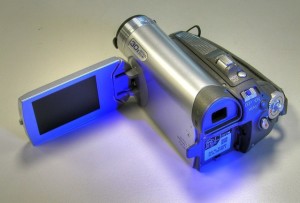 Experiencing a theft, flood, fire, or other casualty loss can be devastating. Imagine trying to list from memory for your insurance claim every single item that was damaged or destroyed. The task will be less daunting if you create a home inventory in advance and keep it in a safe place. We turned to HouseLogic for some great ideas on this very topic.
Experiencing a theft, flood, fire, or other casualty loss can be devastating. Imagine trying to list from memory for your insurance claim every single item that was damaged or destroyed. The task will be less daunting if you create a home inventory in advance and keep it in a safe place. We turned to HouseLogic for some great ideas on this very topic.
- Having a digital camera and video recorder will make creating an inventory much easier.
- Set aside enough time to review your insurance policies, dig up receipts, document your possessions, and figure out where you’ll store your records. One day should be sufficient.
The average home is packed with an array of items collected over the years. And while you may be able to list many of them in a pinch, chances are you’d miss some important possessions if you ever needed to reconstruct your home’s contents from memory.
Your job doesn’t end once you’ve compiled a home inventory, a detailed list of everything in your household. Be sure to compare estimated values to your policy’s coverage to ensure that you’ll be able to replace your belongings in case of damage or theft.
Jack Hungelmann, author of “Insurance for Dummies,” says a picture can be worth more than just a thousand words—it can add up to thousands in cash if you ever need to file an insurance claim. Hungelmann recommends using a digital camcorder or camera to take pictures of each room to document your belongings. “I recommend that people open up their cupboards and drawers. Be sure you have a record of all the things you own,” he says.
You can literally walk from room to room and record narrative descriptions of items. You should note whether something is an antique, for example, or if it has other qualities that make it especially valuable such as the size of a television screen or the type of stones in a piece of jewelry. Get close-up shots of serial numbers on electronics, power tools, and the like.
Filling in a printed checklist with serial numbers, brands, quantities, and estimated values will prove indispensable if an insurance claim ever needs to be filed. The adjuster will likely ask for such a list, and you can use the video or photos as proof of ownership. You can download free printed checklists from the Internet.
 Of course, such documentation is useless if it’s destroyed in a natural disaster, consumed by fire, or stolen along with your personal computer. Hungelmann says that using digital media allows you to store the files on online backup services like Carbonite.com, Google Drive, Dropbox or iBackup.com in case your home is destroyed.
Of course, such documentation is useless if it’s destroyed in a natural disaster, consumed by fire, or stolen along with your personal computer. Hungelmann says that using digital media allows you to store the files on online backup services like Carbonite.com, Google Drive, Dropbox or iBackup.com in case your home is destroyed.
If you’d like to save the $10 or more per month these services typically cost, you could also save the files on a USB drive that’s kept in a safe-deposit box, at a relative’s home, or in your emergency bag. The bag should include essentials your family needs in case you’re forced to flee on short notice.
Emcee Arah – “the REALTOR with Architectural Dimension” – is both a Certified Distress Property Expert (CDPE) and a Certified Investor Agent Specialist (CIAS). He is uniquely equipped to assist you in navigating today’s residential real estate market. Contact us online or by phone at (301) 452-5252. And don’t forget to leave your comments below – we’d love to hear from you!


